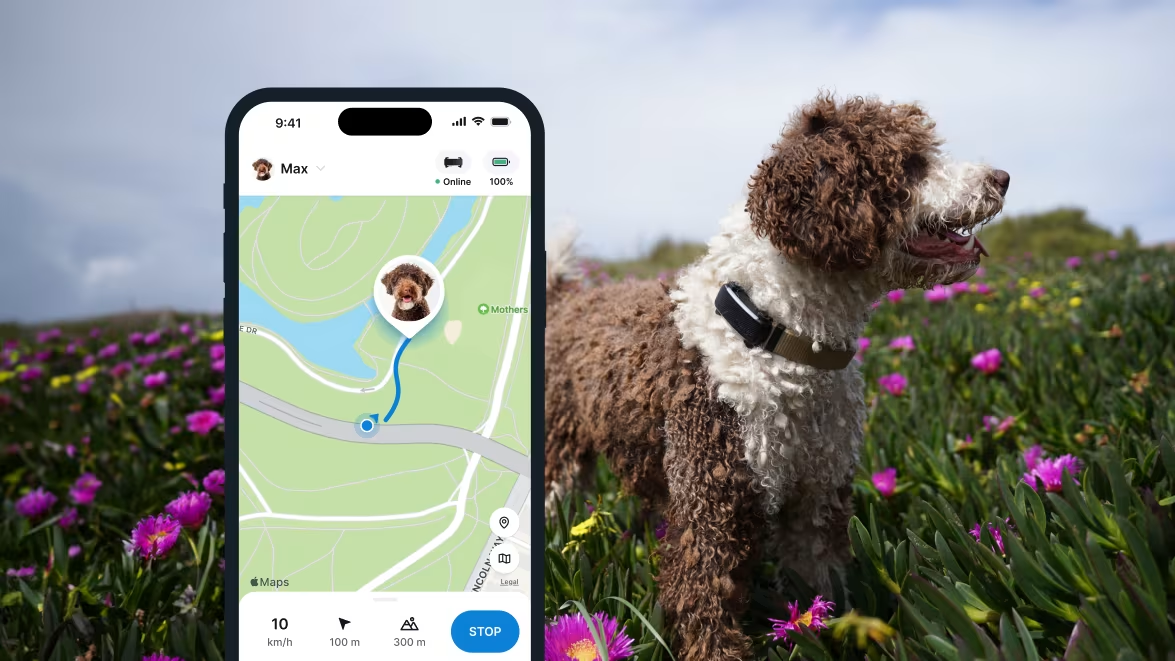City Dogs: How To Raise A Street-Savvy Pack Of Your Own
City dogs face a lot of challenges when they're out and about - other dogs, people, passing cars, garbage, noise. So here are our top safety tips to raise your street-savvy pack with pride and keep them safe at every step.

Living in the countryside might mean rolling hills and open spaces for your buddy to run around in. But when it comes to living in an apartment in a city, raising a street-savvy pack of city dogs is priority #1. Your buddies will need a keen sense of the surroundings, good team work between the two of you – and a plan in case you do find them lost or missing.

Always know your buddy is healthy & safe
Read more1) Understand your local leash laws
While it’s tempting to want to let your buddy enjoy some off-leash time, most cities have strict leash laws. (Especially when it comes to allowing dogs on board public transport.) Leash laws are usually enforced by your local police department – and they mean business. So if you’re caught without one, it’s possible you’ll have to pay a hefty fine. These include:
- How long they should be (standard leashes typically being required to be no longer than 6 feet)
- Whether you can use retractable leashes
- What areas you can let your dog off-leash (like some dog parks or designated dog runs)
- What else your dog needs if you’re both taking public transport (like, for example, a muzzle)
⚠️ Now generally, all dogs (regardless of size, age, or lifestyle) should be taught to walk nicely on leash – but even more so for city dogs. It only takes a second’s negligence for them to bolt away from you…and potentially end up getting hit by a car. Similarly, getting your dog used to a muzzle will also help you both travel comfortably while on public transport.
Read more: The Guide To Leash Training A Puppy Or Dog
2) Be extra mindful of every morsel your dog eats
While some dog parents teach dogs to walk on the side of their owner, city dog parents should keep their dogs a bit in front of them. Why? So you can see if your buddy is nibbling something from off of the street. City dogs quickly learn that there are lots of goodies on the sidewalk – chicken bones, rat poison, ice melting products, wrappers, and more “tasty treats” that are 100% off-limits for them!
Read more: What Can Dogs Not Eat? 15 Foods Poisonous To Dogs
3) Make regular training a priority
Doesn’t matter what it is – anything you practice on a regular basis, you’ll get better at naturally. Which, in the case of city dogs (and kind of like our kids), means basic obedience training. Including commands like:
- Sit and Stay, perfect for indoor environments like cafes and restaurants
- Drop it, especially if you see your buddy sniffing at some food dropped on the ground
- Come back, to prevent your buddy from running out in front of a car
Only the best-trained dogs that end up being allowed in dog parks, cafes, public transport, beaches, and some stores. So make regular training a priority – whether that’s at a specific obedience training school or by yourself with your buddy at home. It’s a great way to keep your buddy both physically and mentally active, plus get you two some important bonding time together.
4) Figure out where your dog’s allowed (and not allowed)
| Places most city dogs aren’t allowed | Places most city dogs may be allowed |
| Museums | Dog parks |
| Libraries | Some outdoor cafes and restaurants |
| Most places of worship (like mosques, temples, and churches) | Some pet-friendly stores |
| Specific shopping centers | Beaches and waterfronts |
💡A good rule of thumb is to always check a store or cafe’s pet policy and whether they have any requirements for dogs. It’s most likely the case you’ll have to keep your buddy leashed at the very minimum – and supervised every second – to ensure they don’t make a nuisance of themselves.
5) Be a considerate dog parent in dog-friendly spaces
- Always carry poop bags and gloves along with you on walks.
No one wants to step in a mess while on the sidewalk – plus your dog’s poop can transmit harmful parasites and diseases. - Train your dog to do their business at the very edge of the sidewalk.
This can prevent it from landing directly in the middle of where other pedestrians might be walking. - Stay on top of dog park etiquette.
Not every dog wants to socialize – and it’s up to you to ensure your buddy doesn’t leap all over one that isn’t as friendly or just wants to be left alone. Make sure to always ask fellow dog parents if it’s okay for your buddy to “say hi” to theirs. - Be aware that some people absolutely DO NOT WANT dogs anywhere near them.
Keep your buddy firmly leashed by your side at all times to prevent any unpleasant encounters.
6) Plan ahead for a “missing dog” situation
Whether you take your dog to the park, to the vet or for a simple walk, there’s no end to the dangers that can occur. And with all the reasons dogs run away, it makes sense to plan ahead for an emergency – aka, if they’ve gone missing. So if you’re looking to keep your buddy safe, it’s a good idea to:
- Become a familiar face with your neighbors. So you have at least a few emergency contacts – or someone who can help you physically look for your dog.
- Get your dog used to wearing a collar and ID tag at the very least. This can help prevent them from getting picked up by a city pound – where they might even end up being euthanized if the staff can’t identify you as the owner!
- Get your dog microchipped. So a helpful stranger can take them to a vet – who can scan them for a microchip, find your contact details, and get in touch with you.
- Update your microchip details on the worldwide registry. So you can help a vet or shelter identify your missing dog no matter where you are in the world.
⚠️ Just remember: an ID tag can fall off or get smudged – while a microchip can only identify your dog. Not track them down in real-time or help you take an active role in, well, actually finding them.
That’s where…
A GPS tracker can be a lifesaver.
Especially since you now have a whole sky full of satellites helping you locate your missing dog – in real-time, over an unlimited range, and with just a glance at your phone. And if you’ve invested in a Tractive device, you can also track your dog while on vacation. Or, well, over 175 countries at least. (If you’re on a Premium subscription.)

Ready to raise your street-savvy pack of city dogs with pride? Remember: with great comfort, comes great responsibility – and you’re the captain of this urban city ship, especially when it comes to controlling your pack of city dogs.



